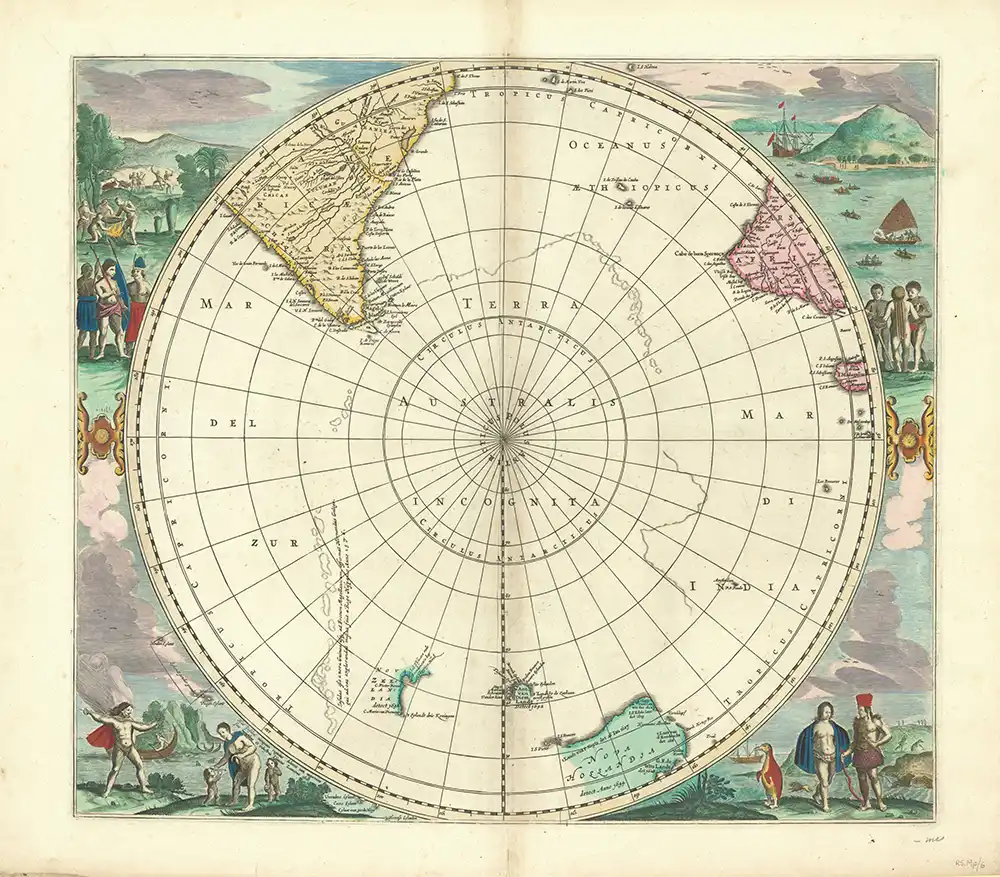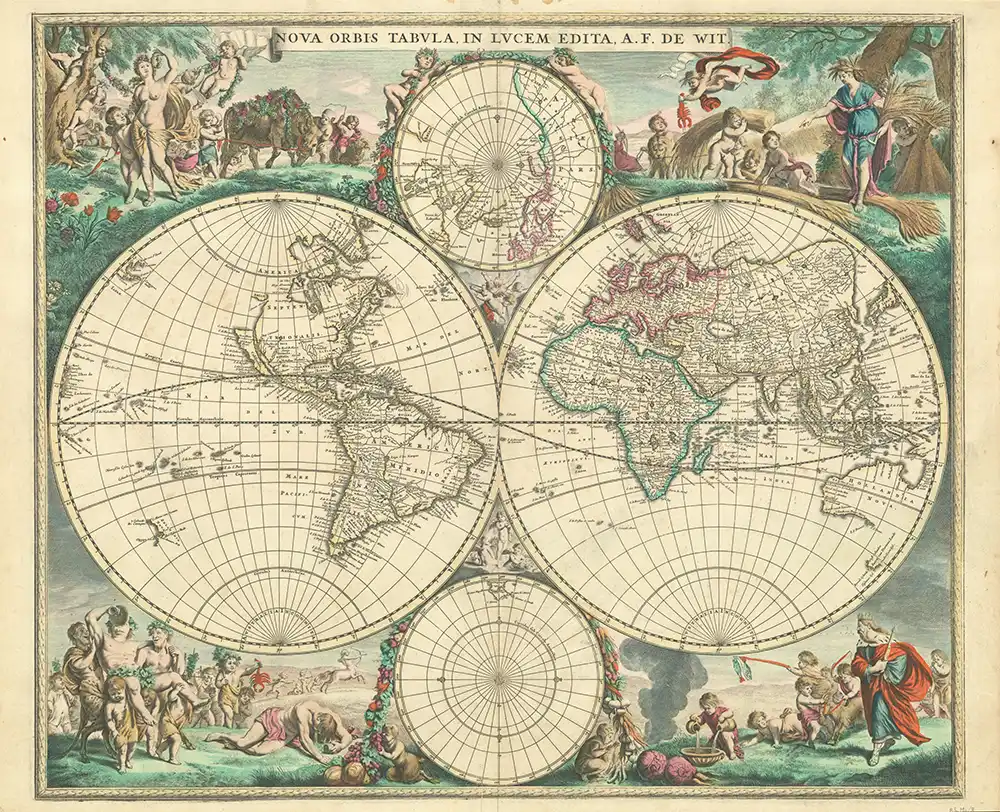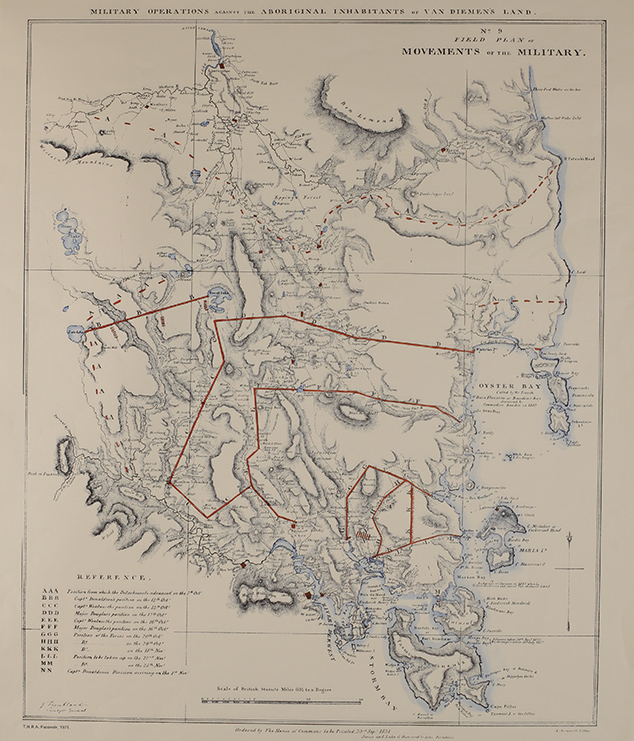
RST Apology to Tasmanian Aboriginal people 2021.

RST Apology to Tasmanian Aboriginal people 2021.


While maps may have commenced their life with the purpose of recording and conveying spatial information, over the centuries the careful design of maps by cartographers means that they have moved beyond the functional - maps are beautiful; and, as beauty often does, maps invoke imagination, devotion and passion.
The maps held within The Royal Society of Tasmania's collection are no different. They are both beautiful and uniquely informative, offering insights into what was, for a short time, known as Van Diemen's Land - now Tasmania - a place undergoing dramatic change during the nineteenth century when many of the maps in the collection were created. But beyond shining a light on the landscape and its interconnections, maps shine a light on the cartographers - on their value systems - informing those that follow what they regarded as important to record and what they regarded as unimportant.
The maps in the collection fall into a number of groups reflecting the passions of past members of The Royal Society of Tasmania who were active from the late nineteenth to the mid twentieth centuries. The historiography of Tasmania is almost as old as the colony itself. ·
By the late nineteenth century there were men with both the motivation and the means to obtain information from overseas about the early exploration of the island. One of these was the poet, geographer and historian James McClymont (1854-1936) who presented a number of papers on the subject to the Society. Yet it was Alfred Mault (1829-1902), a Glaswegian civil engineer in the employ of the Tasmanian government and a vocal advocate of municipal sanitation, who presented a dissertation on maps obtained by McClymont from the French Government and gifted to the Society. Some years later Mault came across a copy of Abel Tasman's map in the Indian Museum in London, a tracing of which he donated to The Royal Society of Tasmania.


Clive Lord (1889-1933) is believed to be responsible for a significant proportion of the maps illustrated here. Lord, a 'Renaissance man', had studied architecture and practised in that field but his main interest was the natural world. Elected to The Royal Society of Tasmania in 1917, he was Secretary from 1918 until his death and was awarded The Royal Society of Tasmania Medal in 1930. Following his death, the Society set up an award in his honour for distinguished scholarship in science or history.
Lord had a great love of Tasmania and was beguiled by the southwest wilderness. In the late 1920s he made three voyages along the south coast to Port Davey. A series of maps was used to illustrate a paper he presented to The Royal Society of Tasmania following his 1927 expedition. Lord's deep and abiding interest in the wild parts of Tasmania is reflected in the number of maps of southwest Tasmania that have come to the Society through him. Given Lord’s passion for studying the early history of European exploration and his focus on the history of Tasmania, it is more than probable that many of the maps and charts collected by The Royal Society of Tasmania are a direct result of his input.
Another benefactor of The Royal Society of Tasmania collection was Sir Ernest Clark (1864-1951) who was appointed Governor of Tasmania in 1933 and was so highly regarded that his term of office was extended twice. Clark was renowned for his support of welfare, scientific and business groups. He was passionate about Tasmanian history and served as President of the Society. His bequest to the Society included maps showing the western mineral Tasmania that district.
The maps and charts in the collection reflect the broad diversity of interests of former members of The Royal Society of Tasmania from the early European exploration of Tasmania to the convict period and the search for mineral wealth in the remote western regions of the island.
Follow this link to the Royal Society of Tasmania Map Collection
The RST have arranged with Full Gamut Printers to make these maps available. Printed at high resolution with quality inks on high quality paper, these map reproductions would make a fine edition to any wall.


The Royal Society of Tasmania acknowledges, with deep respect, the traditional owners of this land, and the ongoing custodianship of the Aboriginal people of Tasmania. The Society pays respect to Elders past, present and emerging. We acknowledge that Tasmanian Aboriginal Peoples have survived severe and unjust impacts resulting from invasion and dispossession of their Country. As an institution dedicated to the advancement of knowledge, the Royal Society of Tasmania recognises Aboriginal cultural knowledge and practices and seeks to respect and honour these traditions and the deep understanding they represent.

On 15 February 2021, the Royal Society of Tasmania offered a formal Apology to the Tasmanian Aboriginal people.